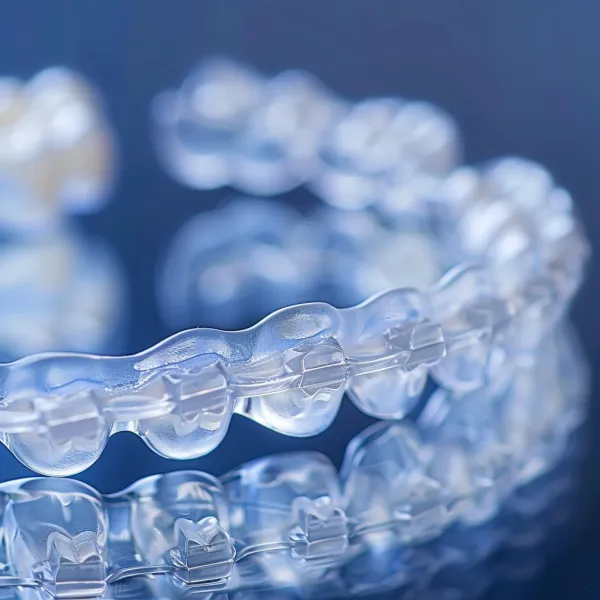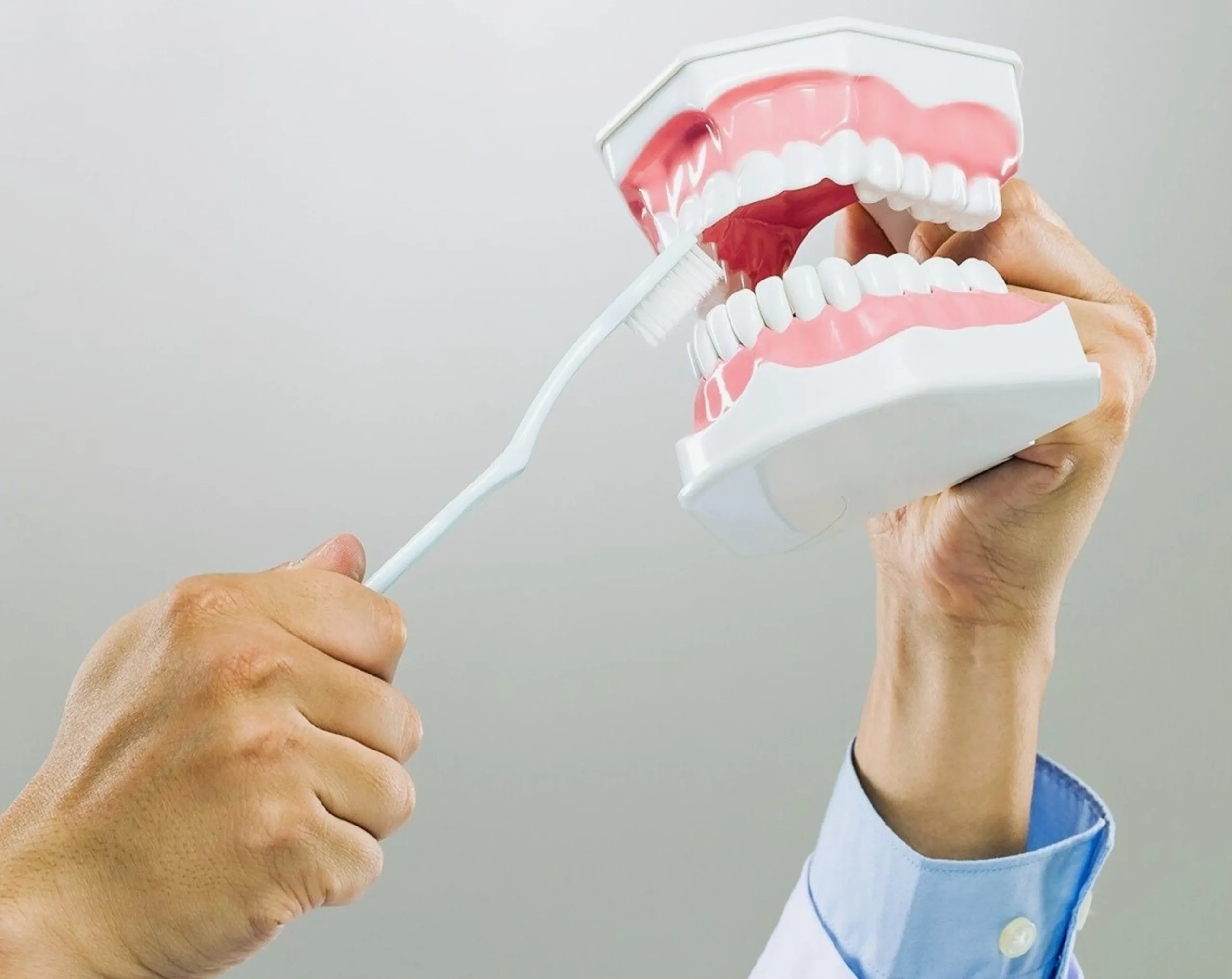Braces are a common orthodontic treatment designed to align teeth and create a beautiful smile. However, those who wear braces often find themselves questioning the limitations of their diet. One of the most common questions that arise is whether it’s possible to enjoy crackers while undergoing orthodontic treatment. In this blog post, we will delve into the world of braces and crackers, separating fact from fiction. So if you’re a brace-wearer or know someone who is, keep reading to uncover the truth about snacking on crackers during your orthodontic journey.
Understanding Braces and Their Limitations
Before we dive into the specifics of crackers, it’s crucial to understand the nature of braces and their limitations. Braces consist of brackets, wires, and bands that work together to gradually shift teeth into their desired position. While braces are sturdy and durable, certain precautions must be taken to protect them from damage. Orthodontists usually provide a list of foods to avoid, as some foods can dislodge brackets, bend wires, or get stuck in the braces, leading to potential complications and longer treatment times.
Crackers: The Risk Factors
When it comes to crackers, their crunchy texture and potential sharp edges raise concerns for brace-wearers. While some crackers are relatively soft and may not pose significant risks, others, such as hard, thick, or overly crunchy varieties, can potentially cause damage. The primary concern with these types of crackers is the force required to bite into them, which can exert pressure on the braces and increase the risk of bracket breakage or wire displacement.
Evaluating Crackers for Brace Compatibility

Not all crackers are created equal, and some are more brace-friendly than others. When determining whether a specific cracker is appropriate for those who wear braces, keep the following in mind:
- Texture: Choose softer crackers over ones that are thick and firm. Your braces are less likely to be damaged by delicate, thin snacks that melt in your mouth.
- Ingredients: Look for crackers without nuts, seeds, or other hard ingredients that could become stuck in your braces. These can be challenging to get rid of and might cause problems.
- Moisture content: High moisture-content crackers are typically less prone to harm things. Crackers that are dry and brittle are more likely to hurt or become stuck in your braces.
- Size and shape: Pick smaller, simpler to bite and chew crackers. Avoid crackers that are too large and need too much energy to break apart.
- Breaking technique: If you do choose to eat crackers, cut them up into more manageable bite-sized pieces beforehand. This will lessen the force applied on your braces and lower the possibility of damage.
Can I Eat Sunflower Seeds with Braces?
Many people enjoy sunflower seeds as a snack, but if you have braces you might be unsure about how safe it is to eat these crunchy foods. This section will examine the compatibility of sunflower seeds with braces and go over some important points to remember.
- Recognizing the Risks
Before deciding whether sunflower seeds are acceptable for braces, there are a few things to consider. The main worry with sunflower seeds is the possible harm they could do to your braces. The necessity to shatter open the hard shell of the seeds can put too much pressure on your brackets and wires. This pressure lengthens the duration of your treatment by increasing the possibility of brackets falling out of place or wires bending.
- Considering Your Options
It is generally advised to avoid eating sunflower seeds when wearing braces due to the risks involved. There are other things to think about if you still want to eat sunflower seeds. Choose shelled sunflower seeds instead of cracked ones so that your braces are less at risk. You can simply eat these seeds without putting too much pressure on your orthodontic gear.
- Take Precautions
It’s imperative to use caution and adhere to a few safety considerations if you choose to eat shelled sunflower seeds while wearing braces:
- Take small bites: To lessen pressure on your braces, take small, manageable bites rather than stuffing your mouth with a handful of seeds.
- Chew with care: Be cautious and chew the seeds carefully, being careful not to bite down too firmly. Keep an eye out for any discomfort or bracket movement.
- Clean thoroughly: Clean your teeth and braces well after eating sunflower seeds to get rid of any seed residue. To maintain a healthy mouth, use a toothbrush, floss, and mouthwash.
Are Peanut Butter and Braces Compatible?

Many individuals enjoy the adaptable and popular dessert known as peanut butter. You might wonder whether peanut butter is okay to eat if you have braces, though. We’ll examine the topic of using peanut butter with braces in this part and offer advice on how to proceed.
Health Advantages of Peanut Butter
When it comes to nutrition, peanut butter has a lot to offer, including being a rich source of protein, beneficial fats, and essential vitamins. Additionally, people who wear braces may find it to be a good snack due to its soft and smooth texture.
Thinking About the Consistency
Peanut butter typically has the ideal consistency for people who are braced. There is a decreased chance of breaking brackets or wires because it doesn’t require as much chewing or biting because of its smooth texture. But it’s crucial to remember that not all types or brands of peanut butter are made equal. Some of them could have extra bits or nut fragments that make them difficult for braces to handle. Choose a variety that is creamy and smooth without any additional crunchy elements as a result.
Precautions to Remember
While peanut butter is typically seen to be suitable for braces, there are a few things to watch out for:
- Check the ingredients: Check the label before ingesting peanut butter to make sure it doesn’t include any brittle or crunchy additives. Choose peanut butter that is smooth and free of additional nuts, seeds, or caramelized bits.
- Be mindful of portion sizes: Although generally safe, peanut butter nevertheless has a lot of calories. To maintain a balanced diet and prevent excessive weight gain, keep portion sizes in check.
- Maintain good oral hygiene: Because peanut butter can be sticky, it’s important to thoroughly brush and floss your teeth after eating it. Particles that linger can become entangled in your braces and raise your risk of developing gum disease or tooth rot.
Can Someone With Braces Eat Crackers?

Dietary restrictions brought on by braces can include the question of whether it is okay to eat crackers while sporting braces. This section will delve into the realm of braces and crackers, examining their compatibility and offering advice to help you choose the right snacks while undergoing orthodontic treatment.
Recognizing the Risks
When wearing braces, crackers can be difficult. They put strain on braces, which could increase the danger of bracket fracture or wire displacement, due to their crunchy texture and potentially sharp edges. Despite the fact that not all crackers are equally dangerous, it’s still necessary to be aware of the precise types and textures that might endanger your teeth.
Analyzing the compatibility of crackers with braces
The following considerations are vital while selecting crackers for those who wear braces:
Materials and Texture
It’s better to have a softer cracker than a thick, firm one. Your braces are less likely to be damaged by thin, delicate crackers that melt in your mouth. Additionally, look for crackers free of any nuts, seeds, or other abrasives that can become stuck in your braces.
Size and Moisture Content
The crackers you select should have more moisture to assist avoid damage. Dry, brittle crackers are more likely to injure you or become stuck in your braces. In addition, select smaller crackers that are easy to bite into and chew rather than larger ones that require a lot of power to separate.
Breaking Method
Before eating, break crackers into smaller, bite-sized pieces to lessen the pressure placed on your braces. This lowers the possibility of harm and pain.
Can You Eat Animal Crackers with Braces?

People of all ages appreciate the popular snack known as animal crackers. If you have braces, though, you might be curious about how these adorable and crunchy snacks would affect your orthodontic therapy. In order to help you make an informed decision, this section will analyze the safety of eating animal crackers while wearing braces.
Identifying the Risks
When it comes to braces, it’s critical to consider any potential risks connected to eating animal crackers. These crackers are frequently light, crisp, and slightly soft in comparison to thicker or harder varieties, making them a potentially safer option. However, it is still recommended to bite and chew animal crackers despite the pressure that can strain your braces and raise the danger of bracket fracture or wire displacement.
Factors to Think About
Keep the following in mind while deciding whether animal crackers go well with braces:
Texture and Size
Animal crackers are typically softer and easier to bite than harder appetizers. Additionally, because of their smaller size, they are less likely to put too much pressure on your braces. However, it’s crucial to delicately chew them while avoiding applying too much pressure.
Ingredients and Moisture Content
Animal crackers usually include a significant amount of moisture, which can reduce the probability that they will snag in your braces. Additionally, look inside for any seeds, nuts, or other sharp objects that can damage your braces.
Can You Eat Goldfish Crackers with Braces?
People of all ages appreciate the well-known and adored snack of goldfish crackers. If you have braces, though, you might be apprehensive about the safety of consuming these crispy, tasty delicacies. In this part, we’ll examine the suitability of goldfish crackers for braces and offer information to guide your choice.
Identifying the Risks
For many who wear braces, the particular feel and crunch of goldfish crackers may be unsettling. The pressure goldfish crackers put on braces could potentially damage brackets or move wires, which is the main risk connected with eating them. Making informed decisions about snacking options while receiving orthodontic treatment requires having a thorough understanding of these dangers.
Assessment of Compatibility
In evaluating goldfish crackers in relation to braces, it’s critical to consider the following:
Bite force and texture
Compared to firmer foods, goldfish crackers tend to be softer and more delicate. They still need to be broken apart with a certain amount of biting force, though. To reduce the possibility of breaking your braces, it’s critical to pay attention to the pressure you use when you bite into goldfish crackers.
Size and Composition
Typically bite-sized and tiny, goldfish crackers are simpler to eat when wearing braces. Additionally, they often don’t include any foods that are firm or crunchy because those could cause issues. To make sure there are no additional nuts, seeds, or other hard particles that could endanger your braces, it’s always vital to verify the specific flavor and study the ingredient list.
Can You Eat Crackers with Braces?

Crackers are a popular food that many people enjoy. However, if you have braces, you might be wondering if it’s ok to consume crackers. This essay will investigate the compatibility of crackers with braces, discuss the risks, and provide guidance so that you can make an informed decision.
Recognizing the Risks
Some crackers pose a risk to people wearing braces. The major reason to avoid eating crackers is their crisp nature, which could harm or strain your braces. The completion of your orthodontic treatment may be delayed if hard crackers cause brackets to break or wires to bend as a result of the pressure from your teeth.
Assessment of Compatibility
Take into account the following elements to determine if you can consume crackers while wearing braces:
Coherence and Texture
Choose crisps that are softer and less dense so they are simpler to bite into and chew. Avoid crackers that require a lot of power to break apart, including ones that are especially crunchy or firm. Your braces will experience less pressure if you select crackers with a lighter texture.
Size and Form
Choose smaller-sized crackers that won’t put too much pressure on your braces. In general, bite-sized or thin crackers are preferable since they lessen the possibility of harming your orthodontic appliances.
Hygiene and Cleaning
Crackers can leave behind little pieces that could become caught in your braces. After eating crackers, be sure to brush your teeth and braces thoroughly to get rid of any leftovers. To keep your mouth healthy, brush, floss, and rinse with mouthwash on a regular basis.
Conclusion
It is feasible to include crackers in your diet even if it may require some caution and careful selection to eat them while wearing braces. Choosing softer, moister, and smaller-sized crackers helps reduce the hazards related to wearing a brace. However, since they are aware of your particular orthodontic needs and can make tailored recommendations, it is always imperative to speak with your orthodontist.
Always practice good oral hygiene when receiving orthodontic treatment. Make sure to fully brush your teeth and braces after eating anything, including crackers, to get rid of any leftover food particles. You may still enjoy the flavor of crackers while working toward a straight and healthy smile by adhering to these recommendations and getting professional advice.
Disclaimer: This article’s material is provided solely for educational reasons and shouldn’t be used in place of qualified counsel. For precise dietary advice based on your unique orthodontic treatment, always consult your dentist or orthodontist.





